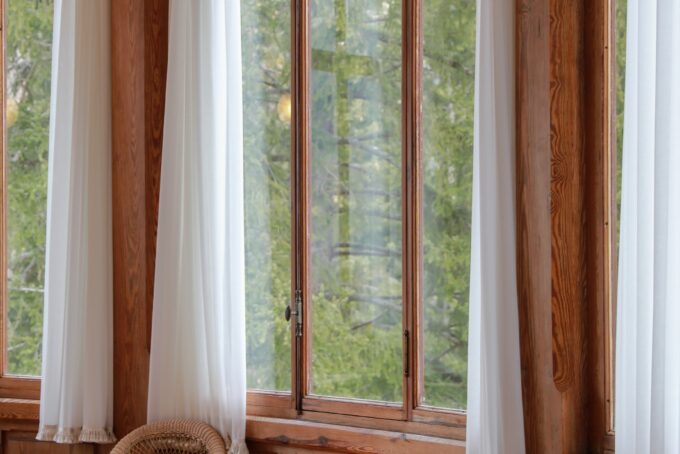It’s no surprise that climate change and its effects on the world around us continue to make headlines. July 2023 was the hottest month ever recorded, California experienced a tropical storm for the first time in 84 years, and wildfires seem to be searing new parts of the country every day. Protecting your home against all kinds of natural disasters becomes ever-important, especially as nature gets more and more unpredictable. Learn how to plan ahead and create a resilient home that stands up against natural disasters and climate change with this helpful guide.
Assessing Structural Integrity
Before diving into the specifics of making your home more resilient, you have to see what you’re already working with. This means assessing its current structural integrity is key. Here’s what you should look for:
Foundation Stability
Start by looking for visible cracks or fractures. Small cracks can be normal wear and tear, but larger ones may reveal structural problems. Check for signs of settling, where one part of your house sinks lower than another. This can lead to uneven floors and walls. Pay attention to moisture or water damage in the basement, as it can weaken the foundation over time.
If you find any concerning issues, you’ll want to call a professional foundation expert. They can evaluate the severity of the problem and recommend appropriate repairs, which may involve underpinning or waterproofing.

Roof and Exterior
Your home’s roof and exterior protect it from wind, rain, and other elements. Inspect the roof for missing or damaged shingles. Finding these can prevent even bigger headaches down the line, like leaks and water damage.
Examine the gutters for debris and blockages, which can cause water to overflow and damage your home’s foundation. Of course, don’t skip the siding! Look for cracks, warping, or holes, as these can compromise your home’s insulation and structural integrity.
Reinforce Windows and Doors
Windows and doors can be extremely vulnerable points during unexpected natural disasters. Consider installing impact-resistant windows made of laminated glass or reinforced plastic.
These can withstand flying debris and strong winds. If your area is no stranger to hurricanes, you could also add storm shutters or hurricane-proof film to existing windows. As for your entryways, reinforce exterior doors with deadbolts and strike plates. For added protection, consider impact-resistant doors.

Emergency Preparedness Kit
Do you have an emergency preparedness kit in your home? Hopefully, this isn’t something you’ll ever need, but if things were to go south in a disaster, this could save you and your family’s life. Keep everything secured in weather-proof bags or luggage, so if you needed to, you could grab them and go. Here are the basics of what should be included:
- Non-perishable food items like canned goods and energy bars
- Water supply for at least three days
- First aid supplies, including bandages, antiseptic wipes, and medications
- Flashlights with extra batteries
- Important documents like identification, insurance papers, and contact information
- A few changes of clothes that can be layered for different seasons
Aside from a kit, you’ll also want to have a comprehensive emergency preparedness plan in place. This means establishing clear communication protocols, and familiarizing yourself with evacuation routes so everyone in your family knows what to expect.
Secure Heavy Furniture
During natural disasters, heavy furniture can become hazardous. To secure them, use wall anchors and furniture straps to prevent bookshelves, cabinets, and appliances from toppling over. You can also place heavy items on lower shelves to lower the center of gravity.

Reinforce Garage Doors
Garage doors are often the weakest link in a home’s defense against storms. To reinforce them, Install a hurricane-resistant garage door made of impact-resistant materials. If your garage door isn’t already reinforced, you can add a garage door brace or retrofit kit.
Elevate Electrical Systems
If you live in a flood-prone area, protecting your electrical systems from water damage is extremely important. Install backflow preventers on sewer lines to reduce the risk of sewage backup during floods. If you have a basement, think about adding a sump pump with battery backup to manage excess water.
Regular Maintenance
The commitment to maintaining your home is ongoing, but a little due diligence goes a long way. Regular inspections and timely repairs are vital to make sure that all the resilient features of your home remain effective.
popular posts
- 1It’s Black Business Month, So Let’s Go Shopping and #BuyBlack!
- 2These Home Decor Items Will Instantly Make Your Space Look Outdated
- 3Black-Owned Home Decor Stores To Support Across the United States
- 4A Look Inside Elon Musk's Tiny $50,000 House
- 57 Black and Multicultural Designers To Follow For Design Inspo
Home

These 5 Kitchen Tools Will Up Your Culinary Experience
by Arielle Clay | January 19, 2023

I’ll Drink To That! Host a Black-Owned Wine & Spirit Tasting At Home
by Arielle Clay | January 20, 2023
Spaces
Whether it’s luxury or ease, every area of your home should be as fabulous and unique as you.
FOLLOW ALONG ON INSTAGRAM
#homeandtexture
Find us on social for more home inspiration where culture, personal style, and sophisticated shopping intersect to help you create a home where you love to live.






